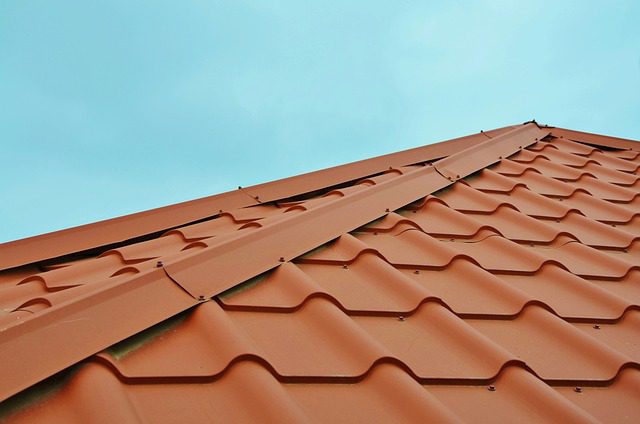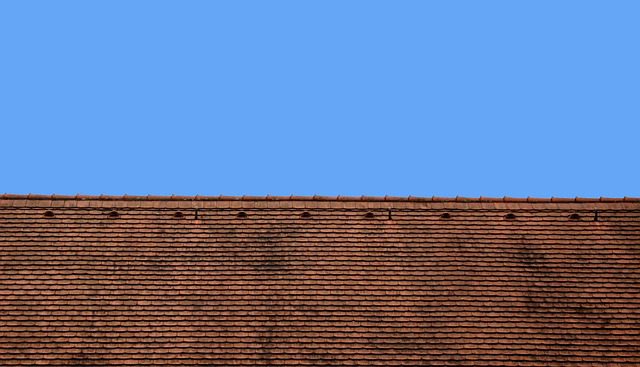A roof's ridge and hips are both essential parts of the structure. They enhance the look of a roof and add strength to the structure. You can use either one of them independently, despite how often you hear them used together.
What are roof ridges and hips? You can't make a good decision about building or fixing up a roof until you know about different types of roof ridge and hip styles and the benefits they offer.
The ridges of a roof are the peaks that result from the intersection of two roof slopes. They come in a variety of materials to accommodate different homes and climates, and they play an important role in maintaining the home's structural integrity and keeping water out.
Roof ridges come in a wide variety of styles and shapes, so picking the right one for your roof can be tricky. A gable ridge, hip ridge, or combination ridge are the three most common ridge shapes for roofs.
Gable Roof
A gable roof has two sloping sides that meet at the roof's peak to form a triangular shape This ridge is commonly used on residential roofs because of its low cost and ease of installation.
Hip Roof
Hip roofs resemble gable roofs but have inward-sloping sides instead of parallel slopes. A hip roof will typically cost more than a gable roof, but it will last longer and have better ventilation.
Combination Roof
A combination roof is a hybrid design that combines elements of a gable roof and a hip roof. While more difficult to install, this ridge can be shaped in a wide variety of ways to suit any roof.
The roof's hips are the intersections of two separate ridges. The three most common kinds of hips are the common hip, the valley hip, and the jack rafter hip.
Common Hip
A common hip is a ridge piece typically found joining two slanted roof planes together. This hip is often used in home building because it is inexpensive and easy to put in place.
Valley Hip
When joining two sections of the roof with different pitches, a valley hip is used instead of a regular hip. On steeper roofs, such as those found on commercial buildings, this style of the hip is commonly used.
Jack Rafter Hip
There is a special kind of hip called a jack rafter hip, and it's used to join together two sections of the roof with different but higher pitches. This hip design is commonly seen on steep roofs, such as those found in churches and other large buildings.
Roofing ridges not only improve the aesthetics of a building but also provide obvious benefits. The following are some of them:
Increased Durability
Mounting a ridge cap can shield your roof from the elements like wind, rain, and snow. The ridge gives the roof more structural support, making it more resistant to damage from the weather.
Improved Ventilation
The installation of a ridge vent allows hot air to escape and cooler air to enter, greatly increasing the efficiency of your home's ventilation system. Because of this, it may be easier for you to keep your home at a comfortable temperature.
Enhanced Aesthetic Value
Having a ridge on your roof can also improve the aesthetic value of your home. Your home's curb appeal could be improved by the ridge's ability to make the different roofing materials look different.
However, there are other advantages to having hips besides just looking good. The following are some of them:
Improved Roof Strength
When put in the right way, hips can make a roof's structure stronger and more resistant to the weather.
Increased Rainwater Runoff
Hips can make your roof's gutters work better, making it less likely that water will damage your home during heavy rains.
Enhanced Roof Aesthetics
Hips can make your roof's gutters work better, making it less likely that water will damage your home during heavy rains.
Roof ridges typically made of clay tiles are well-liked for their durability and longevity. It is possible to customize the look of any roof with the wide selection of clay tiles on the market today. In addition to their visual beauty, the durability of clay tiles makes them a great option for wet and windy climates.
Metal is a common choice for roof ridges because of its strength and longevity. Metal roof ridges are available in a number of shapes and colors, and can be used to create a unique aesthetic for any roof.
Metal is also highly resistant to weathering, making it a good choice for locations with high winds and rain.
Asphalt shingles are a common choice for roof ridges due to their cost and ease of installation. Asphalt shingles can be found in a wide range of colors and designs, allowing for the creation of a really one-of-a-kind roof.
Asphalt shingles are also very resistant to damage from rain and wind, which makes them a good choice for places with a lot of both.
The ridges of many homes are made of slate because of their beauty and longevity. There is a wide range of slates to choose from, allowing you to personalize the look of your roof.
Slate is a great material for places that get a lot of rain and wind because it doesn't wear down easily.

Most roof hips are covered in asphalt. They may be found in a wide range of styles and colors, and they're cheap and simple to set up.
Asphalt shingles are very simple to handle because of their lightweight. Asphalt shingles typically only last between 15 and 20 years, which is a major drawback compared to more durable options.
Roof hips made of metal roofing are another common option. Its lifespan is 20–30 years, which is significantly longer than that of asphalt shingles. It can withstand more abuse from the elements, such as fire, hail, and wind, than other materials.
Metal roofing, while long-lasting, is more expensive and heavier than asphalt shingles. When it rains, the noise level usually goes up as well.
Roof shingles can also be made out of slate or clay tiles. They cost more upfront, but their lifespan is much greater (50–100 years) than that of asphalt shingles or metal roofing.
They are also safer against the effects of natural disasters like hail, fire, and wind. Slate or clay tiles are heavier and harder to install than other materials, and this is their major disadvantage.
Measurements
Roof ridges must be installed with precision, so it's important to measure the roof precisely before ordering materials. When installing a roof ridge, it is important to obtain measurements from both the ridge line and the rafter tails.
Cutting
Roof ridge material must be cut to size once measurements have been acquired. Saws and knives are both suitable for cutting the material. If you want a clean, accurate cut, you'll need the correct tools and techniques.
Nailing
Once the material for the roof ridge has been trimmed to size, it may be nailed into place. The rafter tails and the ridge line should both have nails hammered through them for added stability.
Sealing
The ridge of the roof must be sealed with a watertight caulk after installation. In doing so, you'll be helping to prevent leaks and water damage to the roof's ridge.
Measurements
Roof hips need to be custom-cut to fit a specific region, so it's crucial to take accurate measurements before you install them. Think about how steep the roof is, and how wide the hip ridge is.
Preparing the Roof
After the roof has been measured, it can be prepped. Debris and nails, as well as any existing shingles or tiles, must be removed.
Installation Steps
The hip ridge, usually constructed of wood or metal, is then mounted in place. Check the ridge's alignment and fastening, as it will affect the stability of the roof. Installing the shingles or tiles begins at the hip ridge and continues to the edges.
It is important to give the roof's ridge and hips plenty of thought during construction. Even though they look simple, they are an important part of any roof system and must be taken into account when choosing materials and how to install them.

The ridge of a roof is a very crucial part of the roof's structural integrity, so it's critical to choose ridge materials carefully. Steel, aluminum, and concrete are the materials of choice since they are long-lasting and can withstand heavy use. You should also check that the materials can support the weight of the roof and any additional loads, like snow and ice.
The cost of installation should be considered when selecting roofing ridge materials.Steel and aluminum are often more expensive, but they also tend to last longer. Concrete and wood, for example, may be less expensive initially, but they may need more upkeep and repairs down the road.
It's important to think about the maintenance involved with the ridge of the roof. Materials like steel and aluminum may need more regular cleaning and painting than materials like concrete and wood, which may require less frequent care. It is also important to consider possible maintenance issues when making material choices.
Consider the roof's overall style while making material choices for the hip. For example, steel and aluminum may work better with a modern layout, while wood and concrete are more suited to a more classic style. As a result, it's important to think about how the hip's shape will influence the types of materials that can be used.
A roof hip's intended use should guide the material choices made for its construction. Materials should be specifically chosen for their ability to meet the roof's ventilation and drainage needs. When choosing the materials, it's also important to consider how well they'll hold up in the face of things like heavy wind and rain.
The strength of the materials should be taken into account while choosing the hip. For instance, steel and aluminum are notoriously strong and long-lasting, whereas wood and concrete, on the other hand, are notoriously weak and short-lived. It is also important to evaluate the sort of weathering that will be experienced by the materials.
Materials for the roof's ridge and hips should be chosen with the roof's structural strength, cost, maintenance, design, utility, and longevity in mind. To further guarantee a safe and secure installation, it is recommended to use high-quality materials and has a professional handle the setup of the various parts.
Roofing systems with properly placed ridges and hips can be extremely sturdy, lasting for many years, and able to withstand harsh weather while still allowing for adequate airflow and water runoff.
The ridge and hips of a roof are two important structural elements. It is important to know the numerous types of ridges and hips, as well as the advantages of each, before deciding on a roof for new construction or renovation.
A roof's ridge and hips are important aspects because of the benefits they bring in terms of weatherproofing, airflow, and aesthetic appeal.